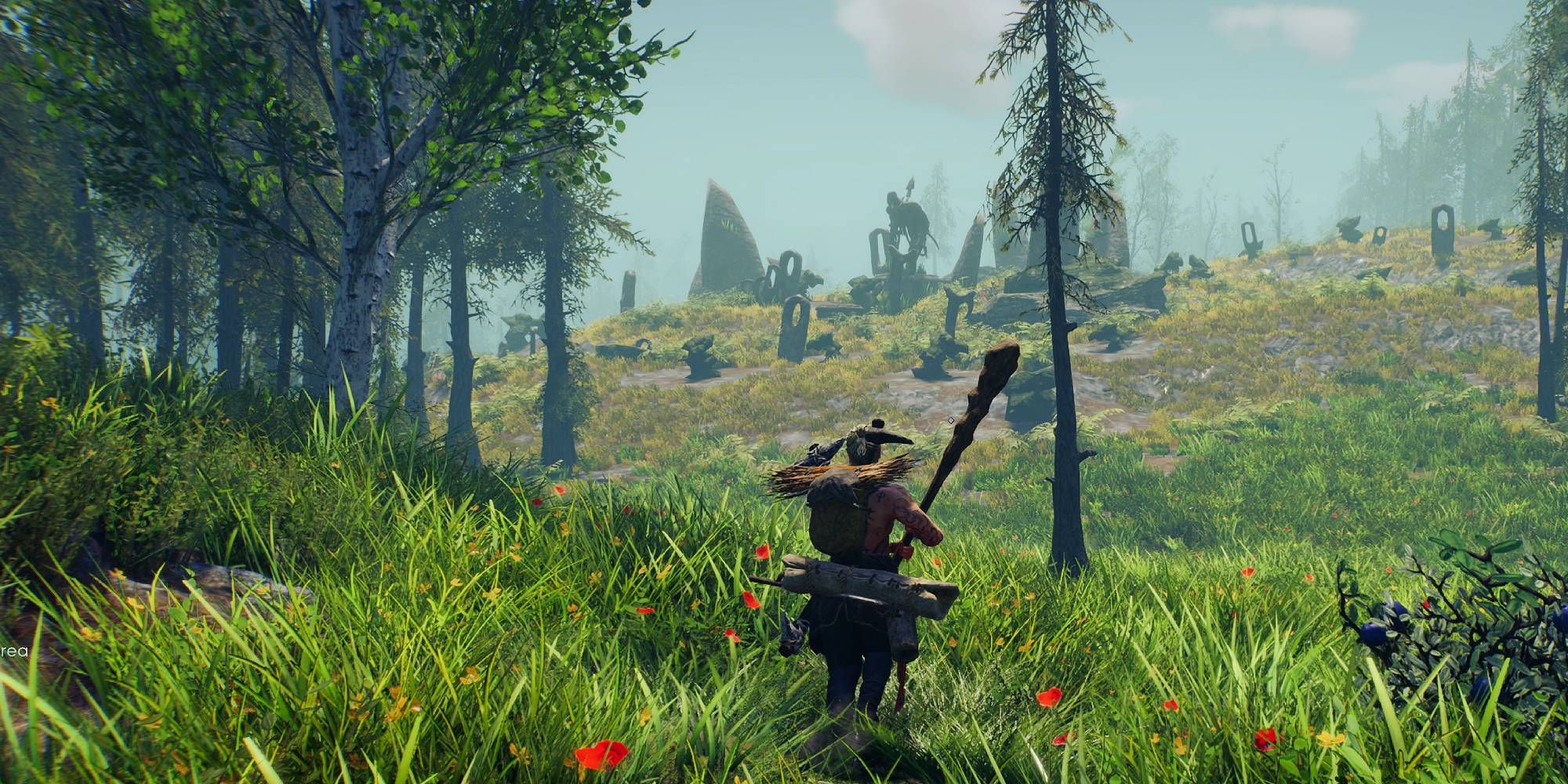
Aska is a Viking survival game, similar to Valheim in many ways, but with its own tribe-building mechanics that turn the late-game into more of a colony simulator than your regular survival crafting game. The grind is pretty heavy during the early stages, but as you develop your small tribe you can leave most of the manual tasks up to your NPCs.
This guide covers how to get started in the game, with some tips based on our initial hours in the early access version of Aska.
Pick Up Everything
This feels like a pretty straightforward tip for a survival game, but in the case of Aska it's even more important than usual. You should be on the lookout for:
- Small rocks - found easily along the coastline, but these can appear in the woods as well.
- Reeds - found only on the coastline.
- Mussels - found only on the coastline.
- Fruits and vegetables - found in the woods.
- Bird nests - found in the woods. More of these will appear after a heavy storm.
- Sticks - You will need a lot of sticks. You can harvest these from Dwarf Firs.
- Flax for Fiber - harvested from Flax Plants or harvested from Bark and Thatch.
You are going to need a lot of Fiber in particular, which means you should harvest a bunch of the Reeds along the shoreline where you spawn - as well as small stones and any mussels you find clinging to the rocks.
Three tips:
You can press 'Z' on your keyboard to scan the area - any harvestable items are highlighted.
Reeds and Bark can be harvested from your inventory and broken down into Fiber, which means you don't need to rely on finding Flax Plants to start producing Rope for your tools, weapons, and shelters.
Although it doesn't make much sense, going foraging at nighttime is actually fantastic in Aska because of the way the Z key highlights your surroundings. Items that might be hard to spot in the dense green undergrowth actually show up much better at nighttime.
Food And Water
Berries, mussels, and any carrots and other vegetables you find will be enough to sustain you in the early game. Berries even provide you with a minimal amount of hydration.
For water, you're on the hunt for Natural Water Collectors which are small rocks with holes in where rain has gathered. These can be drunk directly from the rock, or you can harvest them to add to your water canteen. You'll find these just wandering through the woods.
It's a good idea to establish your base close to one of these Natural Water Collectors, as later on you can build a well directly on top of it - solving the majority of your water issues for both you and your villagers, who will drink directly from the well.
We also recommend finding a nice spot of flat land - the terraforming isn't properly optimized in the game and things can start to look a little wonky.
As you progress in the game and establish your tribe, you'll be able to build a Gatherer's Pit and its subsequent upgrades, which allow NPCs to go and forage for vegetables and other food in the wild.
Likewise, you can build a farm...but let's not get ahead of ourselves.
Get More NPCs As Soon As Possible
The faster you can acquire NPCs to populate your new tribe, the better the early-game experience is going to be.
You'll find five Jotun blood in the crates near the wrecked ship that you wake up in, which is enough to summon a single villager using the Odin's Eye.
However, to actually build the Odin's Eye, you'll need to first craft a Shelter and Pickaxe to get large stones. Once you've done that, place the five Jotun blood in the Eye and wait 10 real-time minutes for your first NPC to appear in the town. Assign them to a shelter and say hello to your first friend in the Viking wilderness.
You can't miss Jotun Blood Stones - they glow a pale blue color and can be harvested with a pickaxe. Each stone will wield anywhere between 1-5 Jotun Blood.
As the game progresses, you'll need to venture further and further from your base to find more stones.
Managing Your NPCs
The key to a successful tribe in Aska is to make sure you're actively managing your NPCs.
It's a good idea to start with the Woodcutter's Pit to start your production of Sticks, Long Sticks, Bark, and Fibers. You'll need all of these to build just about anything substantial in Aska, including the majority of your tools and larger structures.
You can set Fiber as priority in the Woodcutter's Pit - this will push NPCs to break down Bark into Fiber.
Once you get your Workshop Pit set-up, it's likely your NPC will constantly complain about a lack of Fibers for crafting...so let's get that out of the way first.
Structure priority in Aska:
- Woodcutter's Pit
- Gatherer's Pit
- Stonecutter's Pit
Your NPCs will often run over and tell you if they're having any problems. You might run into Storage Full issues, particularly for the Stonecutter. Just reassign your NPCs to other jobs to help out with any missing materials.
Remember To Build Markers
Markers are cheap and useful. They can be used to expand the radius of your NPC zones, meaning your foragers will hunt for vegetables further afield, your woodcutters will chop down more trees, and your stonecutters will find more stones.
Base Defense
In its current early access form, your base will be periodically attacked by mobs. The severity of the attacks depends on the number of villagers in your town - to begin with, it'll just be some pesky Smolkrs who just linger on the outskirts. Then you might be attacked by skeletal bruisers and rangers.
Your villagers will also constantly complain about a lack of base defense, which can only be remedied by building defenses (makes sense, we guess.) However, these are resource-intensive and can be difficult to get established until much, much later in the game.
NPCs will defend themselves, but you can also train them at the Barracks or Archery to help them improve their skills over time.













